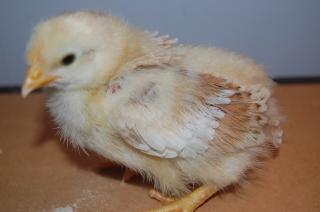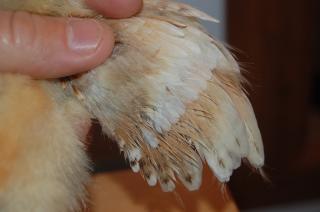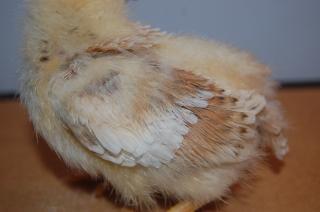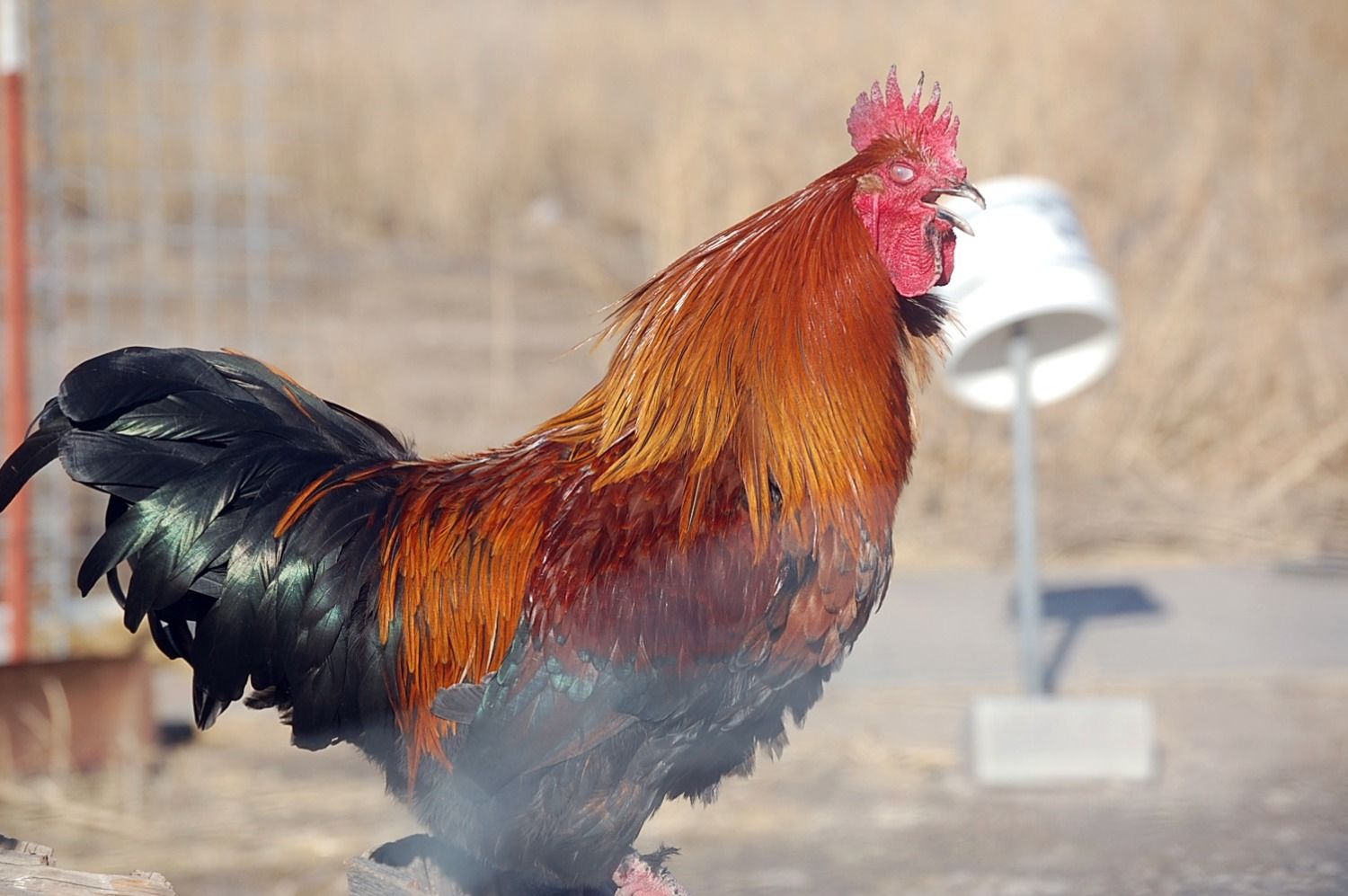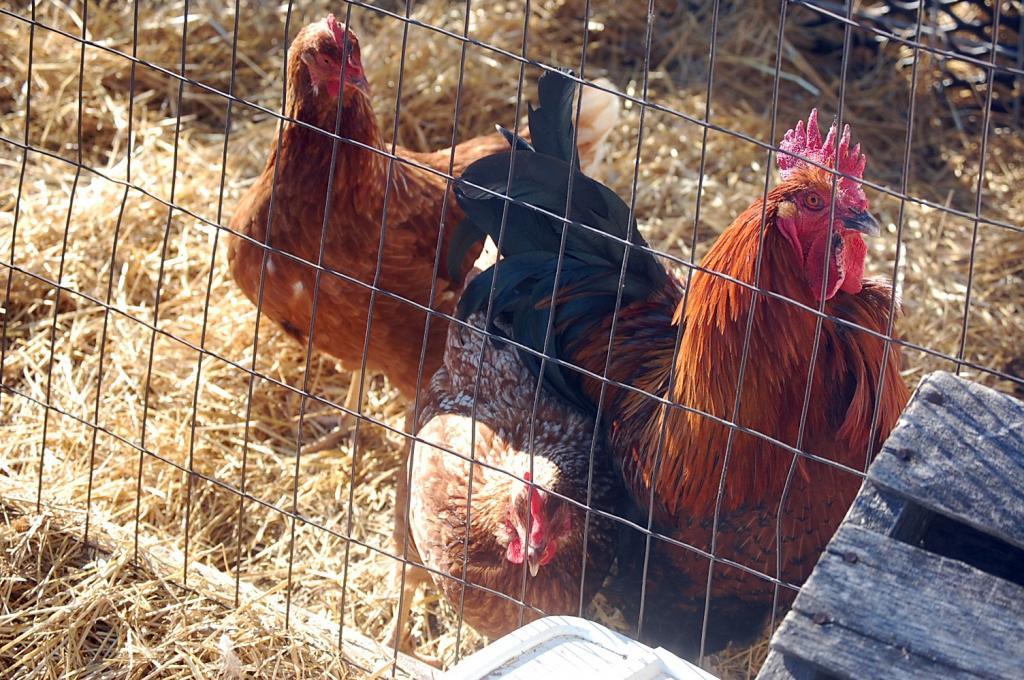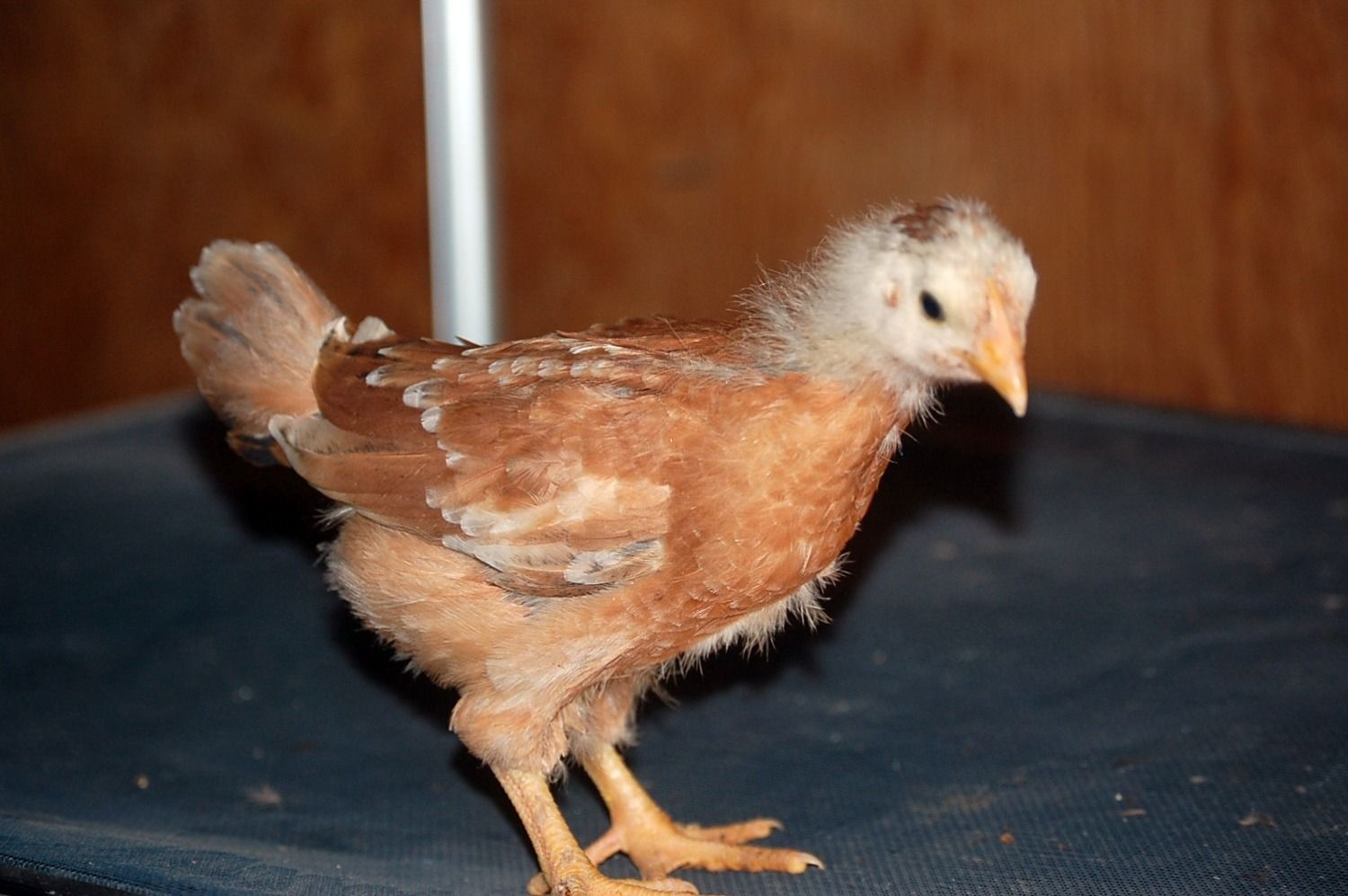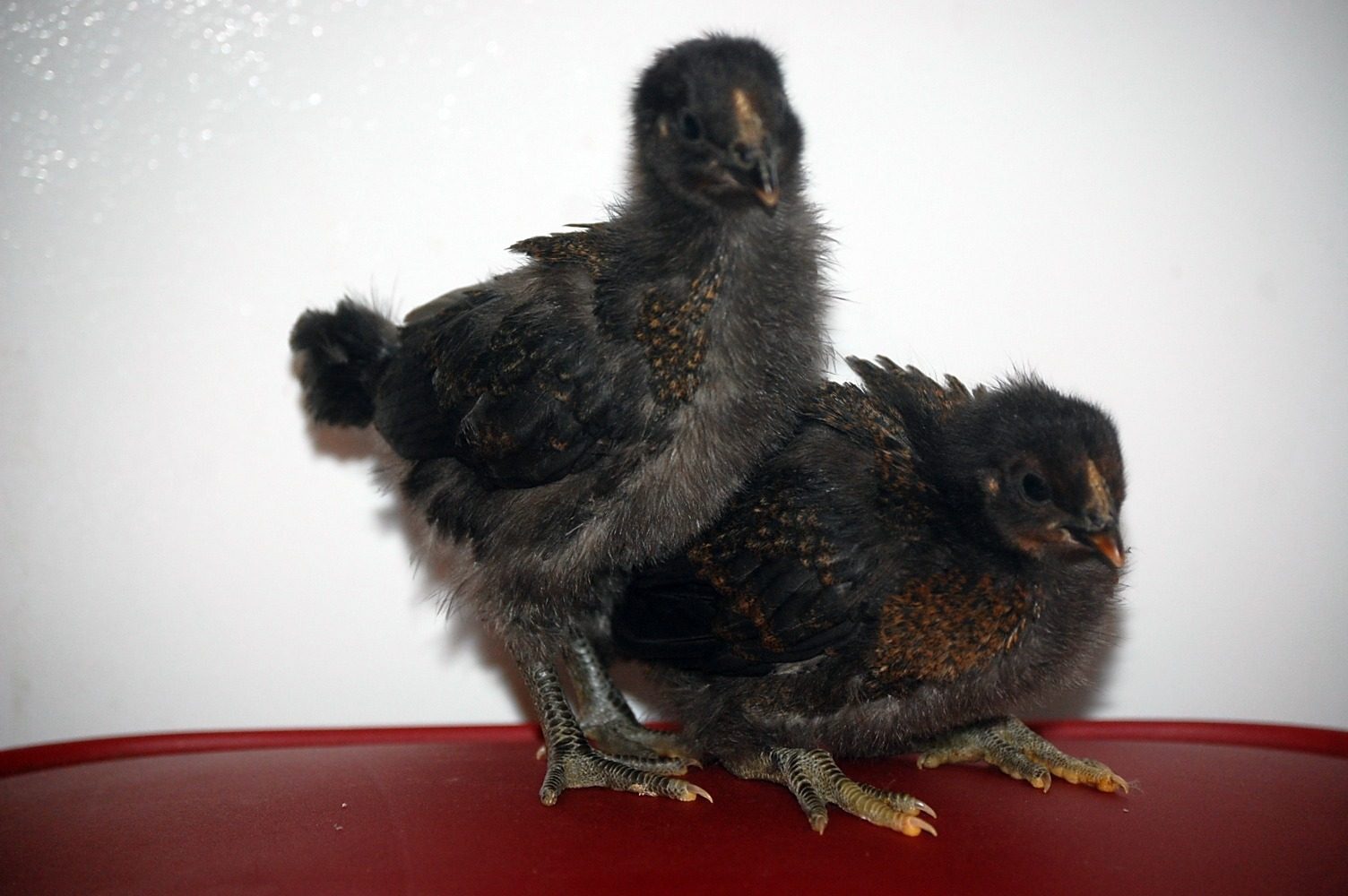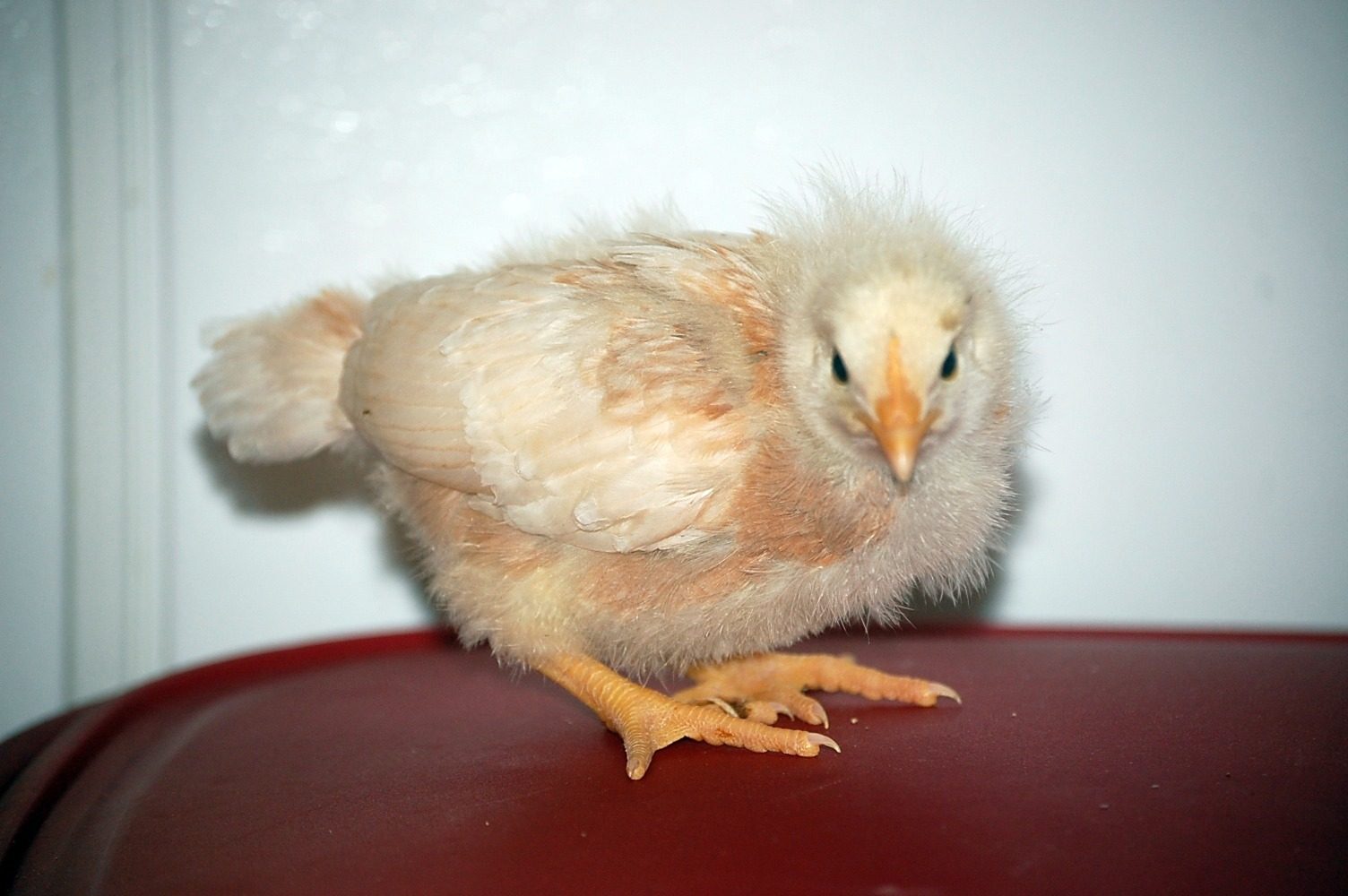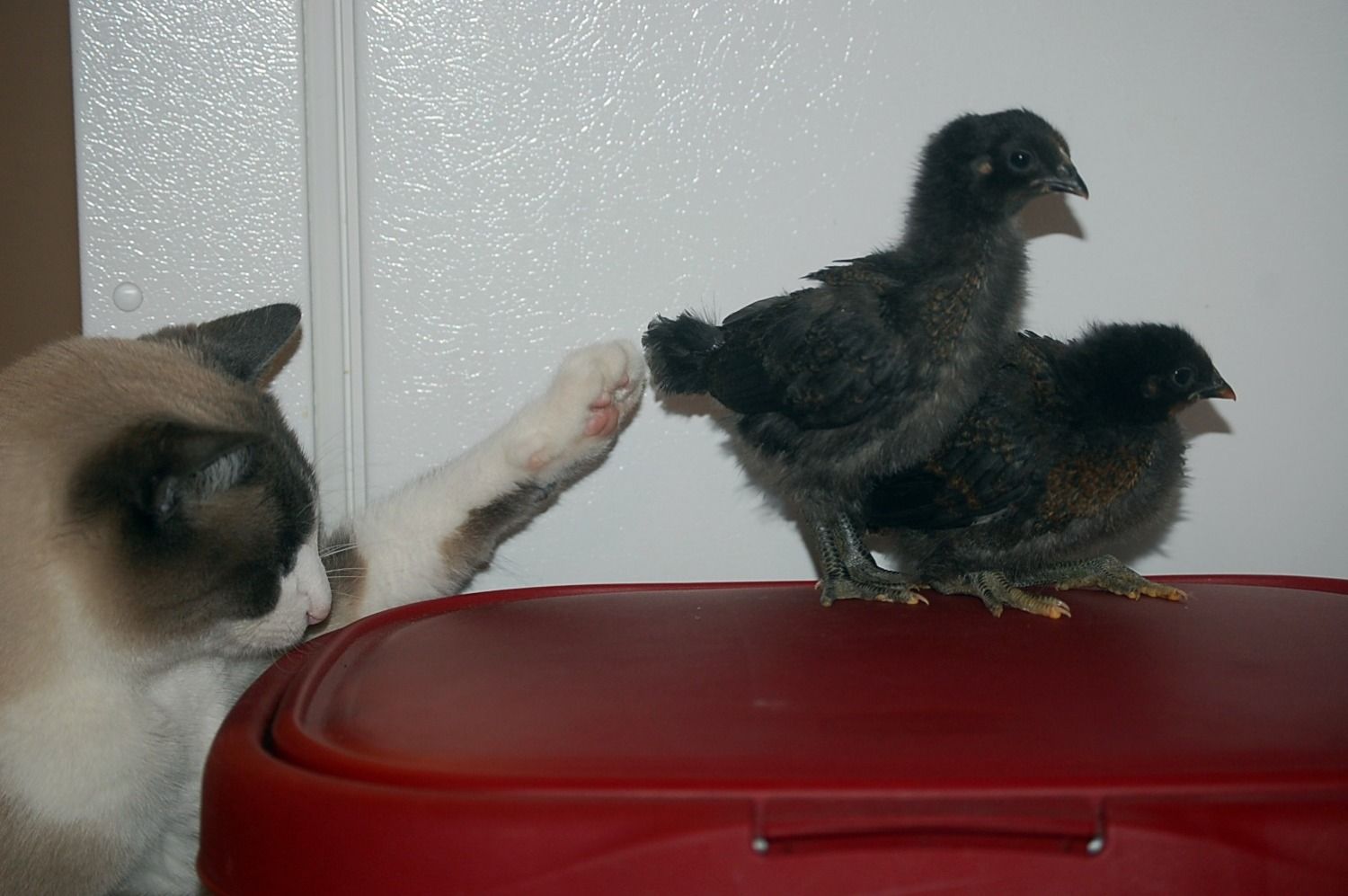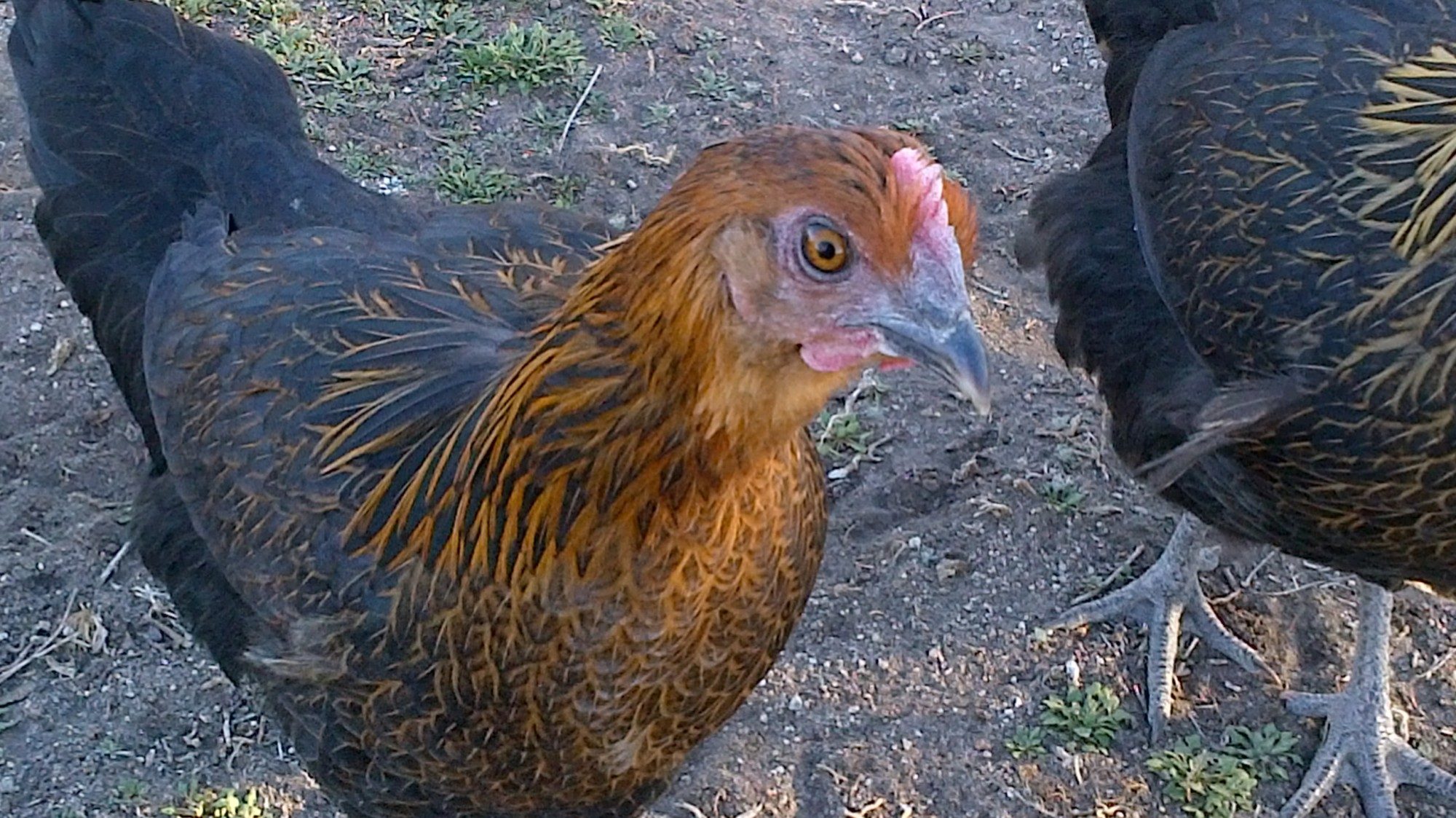most of my hens are still recovering from molting. I'll try to snap a pic of the darker hen soon and post. The "white copper" is in heavy molt still.
I had one hen that I lost in the fire that was a beautiful version of this cross. She had a red enhancer - mahogany or some other autosomal red that made her hackle deep red, and she had decent amount of colored hackle. The rest of her was super shiny beetle green black. She reminded me of Christmas.
I had one hen that I lost in the fire that was a beautiful version of this cross. She had a red enhancer - mahogany or some other autosomal red that made her hackle deep red, and she had decent amount of colored hackle. The rest of her was super shiny beetle green black. She reminded me of Christmas.

